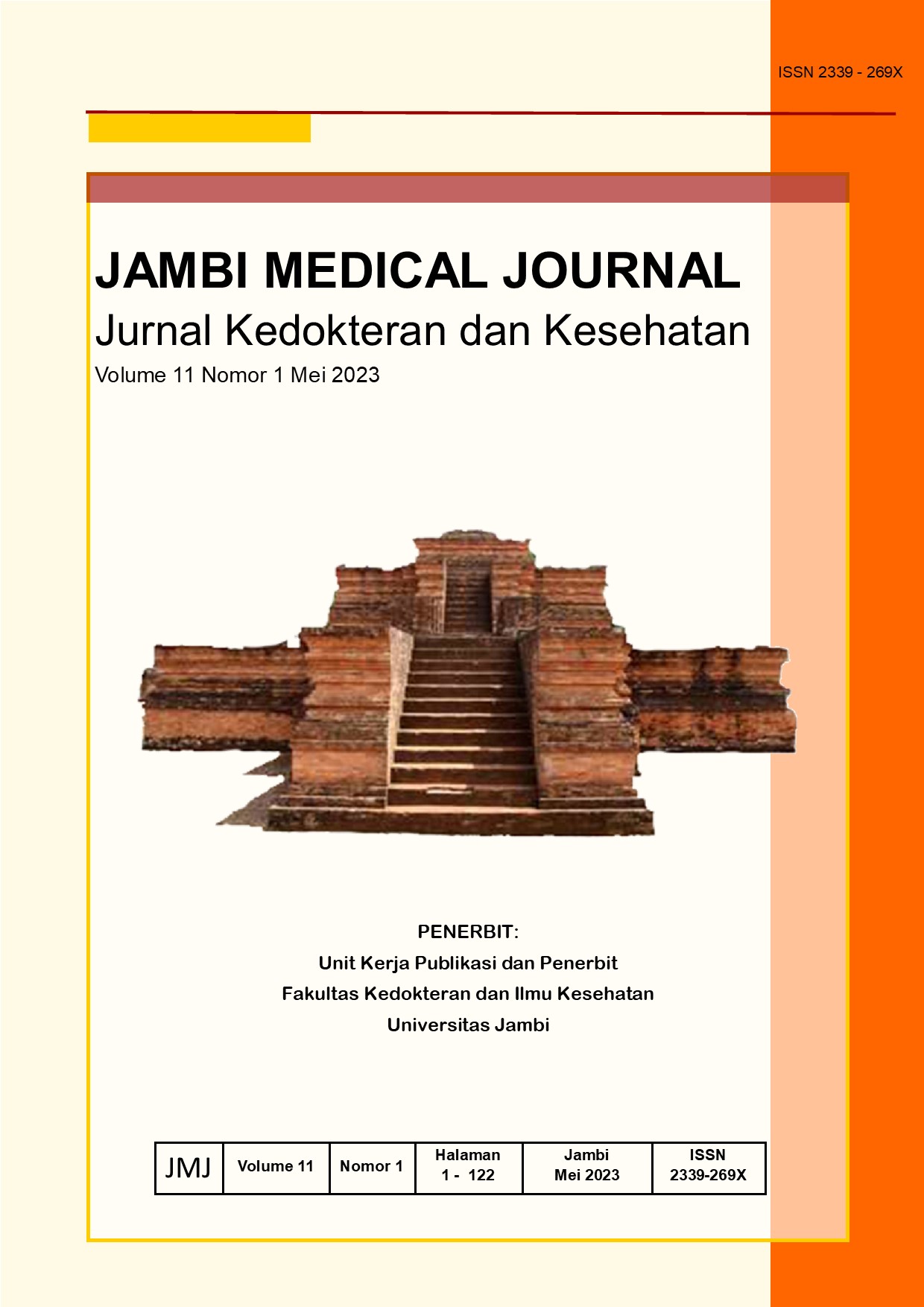HUBUNGAN MIOPIA DENGAN AMPLITUDO AKOMODASI PADA SISWA SMP NEGERI DI KOTA PADANG
DOI:
https://doi.org/10.22437/jmj.v11i1.20455Abstract
Background: Decrease in eye accommodation response is a result of eye growth in children with myopia. Less than normal accommodation response to near focus increased lag of accommodation which decreased image quality of the retina due to hyperopic defocus. If it left uncorrected over a prolonged period of time, it will activate feedback mechanism which ultimately increases progression of myopia.
Objective: This study aims to determine the relationship between myopia and accommodation amplitude in junior high school students in Padang city.
Methods: This was a cross-sectional study involved 384 students with myopia from four state junior high schools in Padang. Visual acuity was determined using Snellen Chart, and refractive error was diagnosed by autorefractometer. The amplitude of accommodation was measured by RAF rule (Zabby).
Results: Based on the degree of myopia, we found 64.58% low myopia, 27.87% moderate myopia, and 7.55% high myopia. The mean amplitude of accommodation in low myopia was 13.73 ± 1.30 Diopters, moderate myopia 10.52 ± 1.26 Diopters, and high myopia 8.41 ± 0.60 Diopters. Significant decreased in amplitude of accommodation were found between low versus moderate myopia, low versus high myopia, also moderate versus high myopia.
Conclusion: there is significant correlation between myopia and amplitude of accommodation (p <0,05), higher grades of myopia show decreasing amplitude of accommodation.
Keywords:myopia, amplitude of accommodation, RAF rule.











